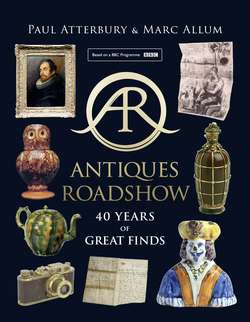Читать книгу Antiques Roadshow: 40 Years of Great Finds - Paul Atterbury, Paul Atterbury - Страница 22
A FRANCIS SOUZA PAINTING
Оглавление‘This painting by Souza hangs on the bedroom wall, so I have been sleeping beneath it for most of the past ten years. Certainly, if the place burns down, it was always going to be the thing I’d rescue first.’
One of the Roadshow’s more unusual London locations was the Dulwich College Picture Gallery, visited in 2008. Most of the filming was done in the garden, but several items were filmed inside the gallery, a sometimes daunting experience for specialists who found themselves in the shadow of a Rembrandt or a Gainsborough. Nevertheless, some interesting and unusual paintings appeared, not least one by the Indian artist, Francis Newton Souza, generally known as F. N. Souza.
Born in Goa in 1924, Souza was brought up as a Catholic and educated at St Xavier’s College, Mumbai. Later, he attended an art school there but was expelled for supporting Indian independence. In 1947, he joined the Communist party and, the same year, was one of six founder members of the Bombay Progressive Artists’ Group, which introduced Indian artists to international, avant-garde movements, such as Cubism and Expressionism, while retaining an awareness of India’s own art history. It was set up a few months after the 1947 Partition of India and Pakistan, an event seen by the group’s members as an impetus to create a new and contemporary art style for a modern India still dominated by conservative and traditional ideas and styles. Their aim was to paint with a new sense of freedom relating to content and technique, while acknowledging universal laws concerning aesthetics and colour composition. The group had largely dispersed by 1956, but its influence lived on, helping to shape the nature of modern art in India and, more importantly, giving it an international standing.
AN EXPERIMENTAL ARTIST
In 1948 Souza held his first exhibition in London, moving to Britain the following year. Other exhibitions followed and, by 1955, his reputation was established. His style, according to the critic John Berger, was an eclectic mixture of Expressionism, Art Brut and British Neo-Romanticism, often overlaid with eroticism. An experimental painter throughout his long career, and an artist who pursued his own particular sense of beauty in the human body (which he saw as wild, noble, fragile and corruptible), Souza was one of the first Indian artists whose work was widely appreciated in Europe and the United States. In 1967 he moved to New York, receiving the Guggenheim International Award and staying there until he returned to his native India shortly before his death in 2002. His obituary in the Times of India stated: ‘With a few slashing lines and a raw, expressive energy, Francis Newton Souza stripped away all subterfuge… the seamy side of life or the steamy, he laid it bare.’ He holds a unique place in the pantheon of India’s most important modern painters.
In 2010, a sale at Christie’s of paintings and drawings from Souza’s estate raised over
£5 million. His work is exhibited in the Tate Gallery, and in major collections in India, Europe, the USA and Australia. In 2015, a major work by Souza sold in New York for $4 million, establishing a new world record for an Indian painting and a reflection of Souza’s global importance.
Rupert Maas was very excited when he saw the painting – he recognised it at once as Souza’s work – but was surprised and delighted that such an unusual work should come to a Roadshow. The owner’s partner had bought it for £200 about ten years ago and it had been hung in his bedroom. Obviously attached to it, the owner said it would be the first thing he would rescue if the house caught fire. He knew about Souza, but was still surprised when Rupert valued it between £40,000 and £60,000. In 2008, the painting was sold at auction in New York for $75,000.
